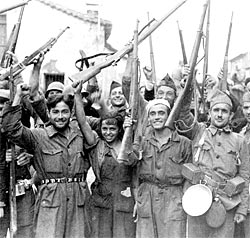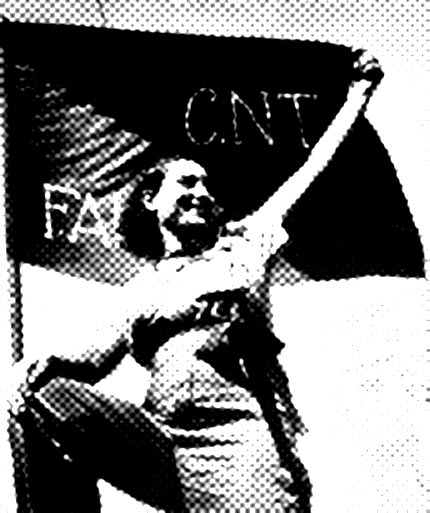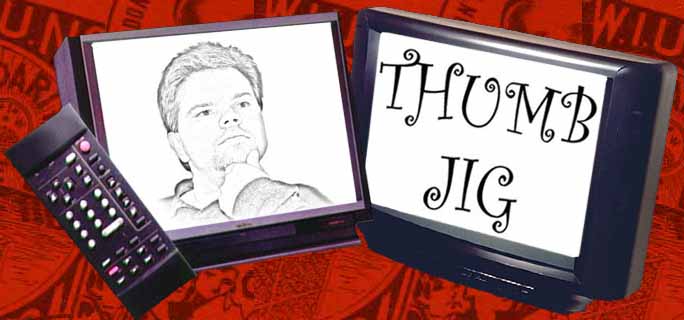 A stock criticism of Anarchism is that it's just too damn Utopian, a romantic fairytale for academics, a whimsical land of Oz located somewhere between Haight-Ashbury and Sesame Street. But these charges of Anarchism's impracticality fall apart when one examines the nuts and bolts of the Spanish Anarchist Collectives. It's no secret that good ideas are hard to suffocate, and this idea had been blossoming in the minds of Spanish workers for decades, one of self-management and self-governance. It wasn't difficult to look at their environment and imagine how there could be a better world. Property ownership was the only way to gain access to the means of life, and with 67% of the land in the hands of 2% of the population peasant farmers had to labor under the wealthy landowners to survive. In those days, the men who held the deeds made the rules. But the people taught themselves about the transformative potential of solidarity, and acknowledged their ability to create equality through their own collective power. From here the Spanish Anarchists produced a functional bottom up society whose ghost plutocrats worldwide still must confront.
A stock criticism of Anarchism is that it's just too damn Utopian, a romantic fairytale for academics, a whimsical land of Oz located somewhere between Haight-Ashbury and Sesame Street. But these charges of Anarchism's impracticality fall apart when one examines the nuts and bolts of the Spanish Anarchist Collectives. It's no secret that good ideas are hard to suffocate, and this idea had been blossoming in the minds of Spanish workers for decades, one of self-management and self-governance. It wasn't difficult to look at their environment and imagine how there could be a better world. Property ownership was the only way to gain access to the means of life, and with 67% of the land in the hands of 2% of the population peasant farmers had to labor under the wealthy landowners to survive. In those days, the men who held the deeds made the rules. But the people taught themselves about the transformative potential of solidarity, and acknowledged their ability to create equality through their own collective power. From here the Spanish Anarchists produced a functional bottom up society whose ghost plutocrats worldwide still must confront.
In the 1930s, Spain was begging for revolution. A third of the country's workforce, or about 1 million people, suffered from unemployment. With a primarily agrarian economy, barring Catalonia which was the only region that had successfully industrialized, growth had screeched to a halt. Because of the wide sustenance gap, starvation became prevalent amongst the peasants. While the lower classes went without food the Catholic Church retained an indefensible 30% of the total wealth of Spain and colluded with the big landowners by charming its patrons with fantastic stories of supernatural visions as to exaggerate its relevance in people's lives and ensure their obedience. The working class found no relief from their recently created Republican government, who promised to redistribute the country's wealth but wouldn't be able to fully enact this reform in under a century. Government, industry and the Church failed the Spaniards.
Harsh crackdowns on dissent followed the formation of the Republican government. A collection of organized workers called the CNT actively opposed the cruelty of the bourgeois, and were massacred as a result. During the next election, the CNT and its socialist ally, the UGT, boycotted the polls. They no longer wanted to elect an autocrat derived from a shallow pool of candidates who would decide the best way of exploiting their class. Instead, they held strikes across the country, demonstrating in every major city and converting new members en mass. As a response, a rebel group of fascists helmed by Franco promised to crush the worker's resistance. This would be the beginning of the revolution.
Franco's fascist rebellion was pushed back in many parts of Spain by workers who took over the means of production and collectivized the land. There were even reports of soldiers deserting the Republican Army and joining their fellow workers in the revolution. But all the bloodshed would have been meaningless if there wasn't a new model that could replace the old. This moment was what mattered most about the Spanish Revolution.
All remnants of hierarchy were dispensed with. In this world, there were no bosses to be obeyed or gods to be worshiped. The workers decided everything through frequent assemblies where they discussed and voted on issues. Everything was shared and distributed equitably. No longer were people forced into degrading arrangements with masters due to fear of unemployment. There were no homeless on the streets. Words that signified authority like "Sir" were replaced with "Comrade" and tips in restaurants were banished. Area churches were gutted and replaced with schools, beauty parlors and movie theaters which were free to everybody even non-Anarchists.
The new worker-managed workplaces were called syndicates, and innovated better than when they were under Capitalist control. Bakeries which suffered from rodent infestations and disease were updated and improved under the workers' guidance. Dilapidated bridges, canals and roads were fixed and developed by combining the resources of each member of a Collective. Farm Collectives grew oranges by cleaning the soil themselves, while under the old rule a chemical fertilizer was added to the earth reducing the quality of the harvest. Potatoes were also planted in the shade of the orange orchards, an idea the previous landowners never allowed. Because the workers were no longer encumbered by the effects of wage slavery and the specter of starvation they were able to increase the quality of their yields and products without the incentive of competition.
This is not to say everybody got along. There were those who didn't want to be apart of a Collective. In many areas up to 30% rejected Anarchism and kept their private property. Did the unions coerce these individuals into accepting their philosophy? Of course not, that would run counter to what Anarchy stands for. In fact, there are examples of the Anarchist Collectives offering these people the best land in the region just so the Anarchists could consolidate their land and leave non-Anarchists free from their influence. At times, members of a syndicate didn't want to share the products of their labor with other members of the Collective. Disagreements like these were aired at assembly meetings. Here, the majority did not impose their will on the minority but utilized persuasive debate. Typically, the worker who refused to share was reminded of how the former bosses also refused to share their property, and created unemployment and poverty. This memory most likely hadn't lost its sting for the worker who lived day to day under hideous conditions. Usually, he or she would have been convinced to share with the rest of the Collective. A popular battle cry of the Anarchist militia was: "Stand fast and fight to the last". And that's what many of them did for as long as they could. But supplies ran low due to the Communist's fear of empowering the Anarchists, and Franco's Rebel Army had intensified. Eventually, amid much protest from some of its members, the CNT was absorbed into the government which ultimately fell to Franco. But the defeat of the Anarchist Collectives was not a result of their Anarchist principles, it was due to their betrayal of them. The CNT and the other Spanish Anarchists should have refused arms from the Communists and decapitated the government while they had the chance. Fortunately, we inherit the optimism of that era. Buenaventura Durruti, a famous Anarchist militiaman, summarizes:
A popular battle cry of the Anarchist militia was: "Stand fast and fight to the last". And that's what many of them did for as long as they could. But supplies ran low due to the Communist's fear of empowering the Anarchists, and Franco's Rebel Army had intensified. Eventually, amid much protest from some of its members, the CNT was absorbed into the government which ultimately fell to Franco. But the defeat of the Anarchist Collectives was not a result of their Anarchist principles, it was due to their betrayal of them. The CNT and the other Spanish Anarchists should have refused arms from the Communists and decapitated the government while they had the chance. Fortunately, we inherit the optimism of that era. Buenaventura Durruti, a famous Anarchist militiaman, summarizes:
"We have always lived in slums and holes in the wall. We will know how to accommodate ourselves for a time. For, you must not forget, we can also build. It is we the workers who built these palaces and cities here in Spain and in America and everywhere. We, the workers, can build others to take their place. And better ones! We are not in the least afraid of ruins. We are going to inherit the earth; there is not the slightest doubt about that. The bourgeoisie might blast and ruin its own world before it leaves the stage of history. We carry a new world here, in our hearts. That world is growing this minute." (source)


No comments:
Post a Comment